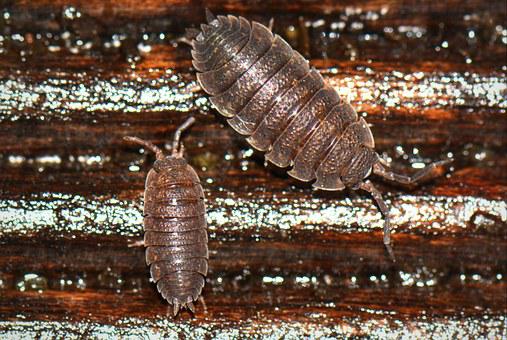 |
 |
 |
Many small creatures will hide from predators, and from the drying effect of the sun, under stones and logs lying on the ground. There is something exciting about peeking under a log to see what you can find there. This can also form the basis for a little experiment.
Take a set of fairly flat items at least 6 inches across - these could be stones, pieces of wood, or even bricks or tiles. Place these on the ground in different locations in the garden. Pick different types of location - perhaps about four different ones - for example, a very damp place, a dry spot, under a tree, on top of leaves, on grass. Your grandchild could write a number on the top of each object, so as to keep track of which is which.
Then come back at intervals to see what can be found underneath each of them. A magnifying glass will be useful, though your grandchildren's eyes are probably a good deal sharper than yours! The picture on the left shows some of the life you might find there - woodlice are very likely (especially under wood), along with various sorts of beetles, millipedes, centipedes, slugs, worms, ants, earwigs and so forth. A simple identification guide to some of the most common "minibeasts", from the RSPB, can be found here. You will find a magnifying glass useful for this, if you have one. If you are really lucky you may even find a small toad or a newt.
You might also find eggs. What creatures have laid them? One way to find out would be to collect them, put them in a jam jar on a little soil or leaf litter, and wait to see what emerges. You might want to put a lid or a paper cap on the jar to ensure that nothing escapes. It should be kept in a fairly dark and cool place.
In the spirit of a scientist, an older child can be encouraged to look for differences between the life found under objects in different locations. What does this tell you about the creatures? If one of the objects is placed on grass, then the grass will turn yellow. Why would this be? Here is an educational opportunity to discuss that plants get their energy from the sun, and that the job is done by a chemical called chlorophyll, which is green.